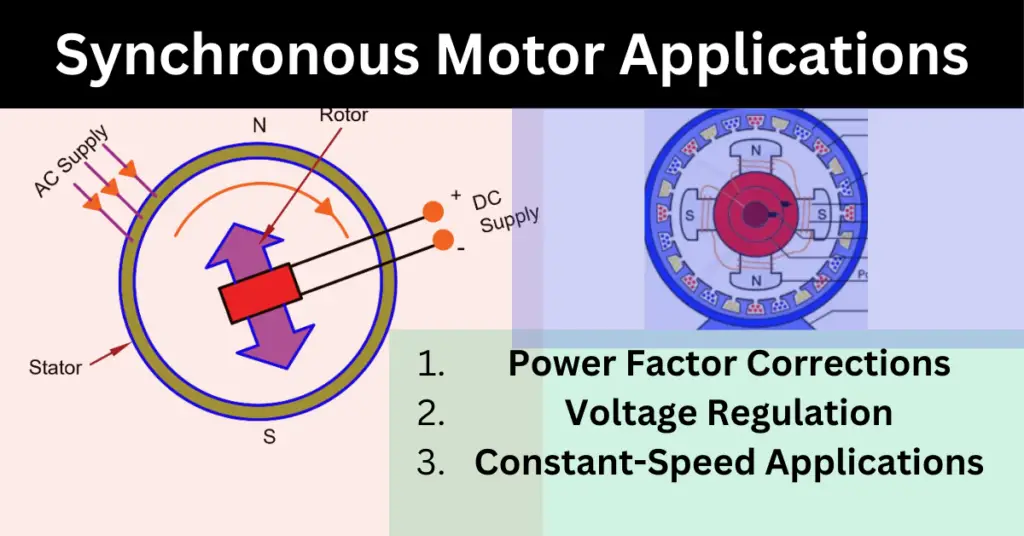Synchronous motors are used mainly for power factor corrections, voltage regulation, and constant speed- constant torque applications.
Squirrel cage induction motors are the preferred choice for motor and drive system applications. Synchronous motors are not commonly used for outputs below 40 kW due to their higher cost. In addition to the higher initial cost, synchronous motors require a DC excitation source, and their starting and control devices are usually more expensive.
For applications requiring high kW output and low speed, synchronous motors are more economical than induction motors due to their high initial cost of varnishes.

The classes of service where synchronous motors are used can be classified as:
- Power factor correction
- Voltage regulation
- Constant speed-constant load drives
Synchronous Motor Applications:
- Synchronous motors are often used in generating stations and substations to improve the power factor of the system. They are operated without any mechanical load and in an over-excited condition to deliver reactive power to the grid. The amount of reactive power delivered by the synchronous motors can be adjusted by varying the field excitation of the motor. These electrical machines are also known as “synchronous condensers.” They are advantageous over shunt capacitors as they can deliver different levels of reactive power by varying the excitation of the machine. Shunt capacitors, on the other hand, generate a constant amount of reactive power.
- They are suitable for loads that require constant speed because of their higher efficiency than induction motors. High-speed synchronous motors find typical applications in drives such as fans, blowers, DC generators, line shafts, centrifugal and reciprocating pumps, compressors, rubber, and paper mills.
- Synchronous motors behave like variable inductors or capacitors, so they are employed to regulate the voltage at the end of transmission lines.
- Synchronous motors were originally designed for constant-speed applications. However, with the advent of solid-state variable frequency drives such as inverters and cycloconverters, they can also be used for variable speed applications. In the textile and paper industries, synchronous motors with a variable frequency drive system are used for a wide range of speed operations.
- Power electronic converters that generate very low frequencies allow for the use of synchronous motors in ultra-low-speed applications, such as driving crushers, rotary kilns, and variable-speed ball mills.
- A synchronous motor can drive another alternator, which generates supply at different frequencies due to its constant speed nature. This device is called a ‘Frequency Changer’.